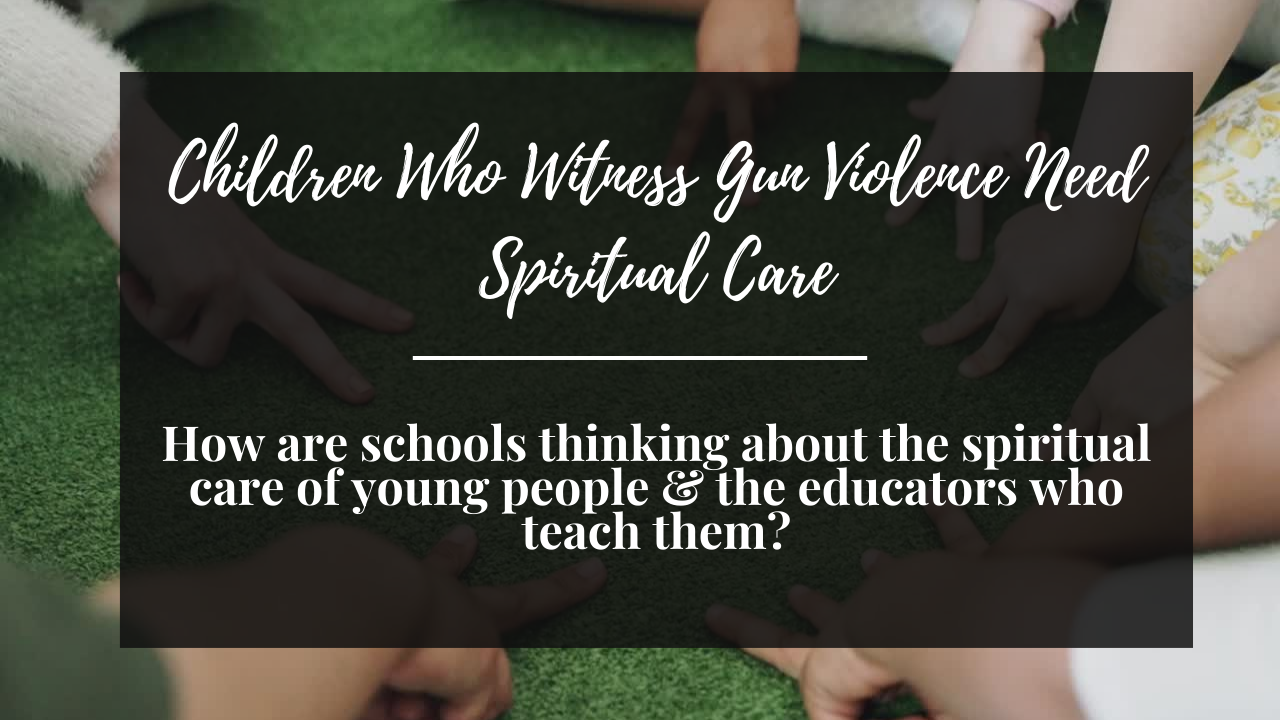Children Who Witness Gun Violence Need Spiritual Care

After voting at my local elementary school on Tuesday, I was walking to my car when there was a drive-by shooting in the area. The screams of children running to safety will forever live burned in my memories. My heart broke for them.
I wondered how teachers, students, administrators, and staff responded to the incident. How did they care for students and themselves? Did students have places to process? Did the adults have a place to process? Did they go back to business as usual?
As an adult, I read about the effects and impacts of trauma, and even I struggled to process what happened. I could not get back to my usual daily rhythm. If I was struggling, I could only imagine what those children were feeling….
Often, when we talk about gun violence and schools, we focus on school shooters. But what about the moments when students witness gun violence within their communities? Where is their refuge?
When schools lean into the toxic tropes that Black & Latine children are “extraordinarily” resilient, students are left vulnerable and without adequate emotional support. They think that these students who attend urban schools, like the ones I attended, do not need to be coddled because they can bounce back. Believing these lies strips them of their childhood innocence and fails their humanity. This is why I think mental health and spiritual care are vital in schools.
For me, being spiritual is the process of “coming home” to the most healed, loved, and well version of oneself. It is active engagement with believing that life flows and we have a moral responsibility to be in right-relationship with the self, the collective, the land, and all living creatures. How we become in right-relationship with all of these things is a spiritual process. Spirituality helps us to make meaning of the ebbs and flows of life.
That being said, how are schools thinking about the spiritual care of young people and the educators who teach them? How are schools considering the ways that students need a space to make meaning of the world around them?
Schools cannot return to business as usual after experiencing what we all did on Tuesday. Instead, teachers can do healing-centered activities like coloring, journaling, meditating, etc. There are also activities where students can learn more about each other and what matters most to them. Play music, dance, play games, or take more naps. Sometimes, the most important lesson we can learn is how to slow down, feel our breath move through our bodies, and lean on each other when we need each other most.
I know this is easier said than done, and it's not an actual solution to the problem. It’s a starting point that my spirit offers. I hope it helps.

